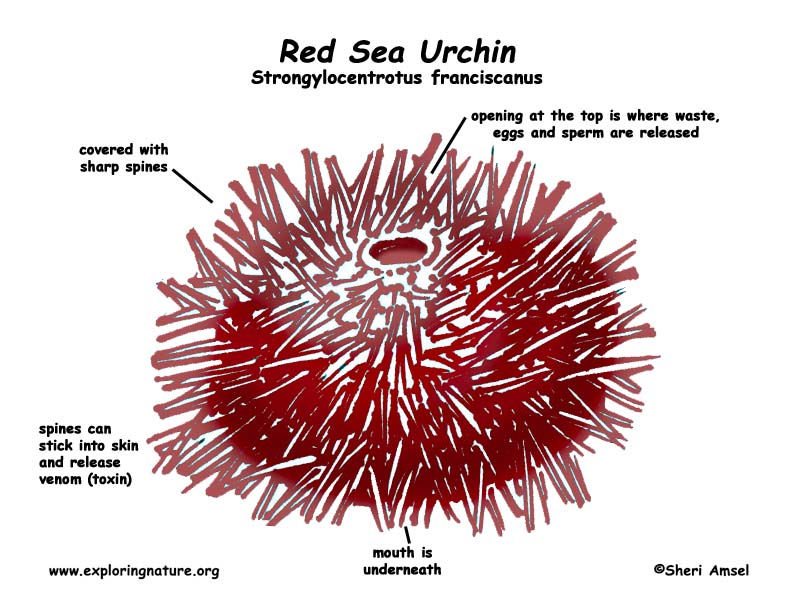

They are found from Alaska to Mexico and in Japan.
They live in rocky areas along coastal waters near their food source, kelp beds.
They are the largest sea urchin in their range, reaching about 8 inches (20 cm) across. Their spines are reddish and up to 3 inches long (7 cm). Underneath, they have a mouth for feeding and rows of tube feet on which to move along the ocean floor.
They gather in large groups near kelp beds.
They eat seaweeds (kelp) and small ocean creatures (invertebrates).
Sea otter eat them.
Females release eggs into the water and males release sperms into the water (broadcasting) where fertilization takes place. Small swimming larvae hatch and grow over time into adult urchins.
Kingdom: Animalia
Phylum: Echinodermata
Class: Echinoidea
Subclass: Euechinoidea
Superorder: Echinacea
Order: Echinoida
Family: Strongylocentrotidae
Genus: Strongylocentrotus
Species: S. franciscanus
When you research information you must cite the reference. Citing for websites is different from citing from books, magazines and periodicals. The style of citing shown here is from the MLA Style Citations (Modern Language Association).
When citing a WEBSITE the general format is as follows.
Author Last Name, First Name(s). "Title: Subtitle of Part of Web Page, if appropriate." Title: Subtitle: Section of Page if appropriate. Sponsoring/Publishing Agency, If Given. Additional significant descriptive information. Date of Electronic Publication or other Date, such as Last Updated. Day Month Year of access < URL >.
Amsel, Sheri. "Sea Urchin (Red)" Exploring Nature Educational Resource ©2005-2024. December 13, 2024
< http://mail.exploringnature.org/db/view/573 >

